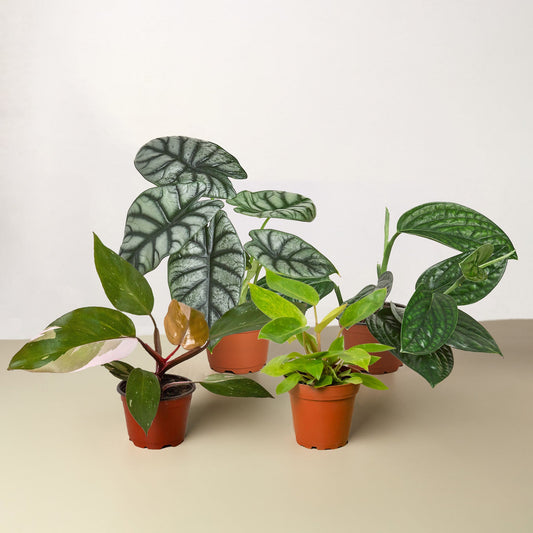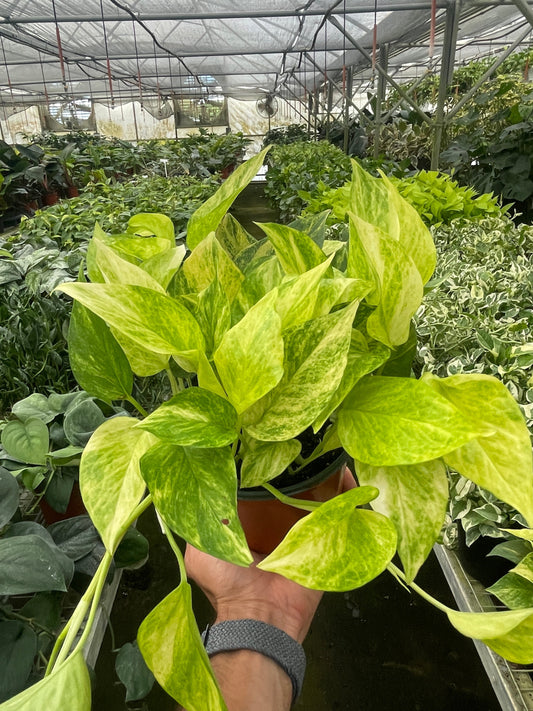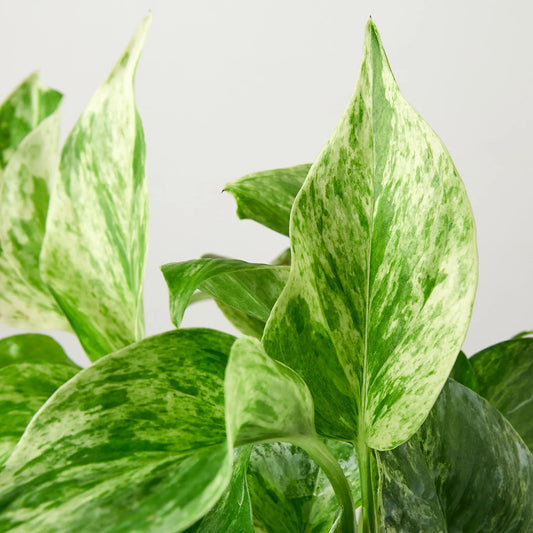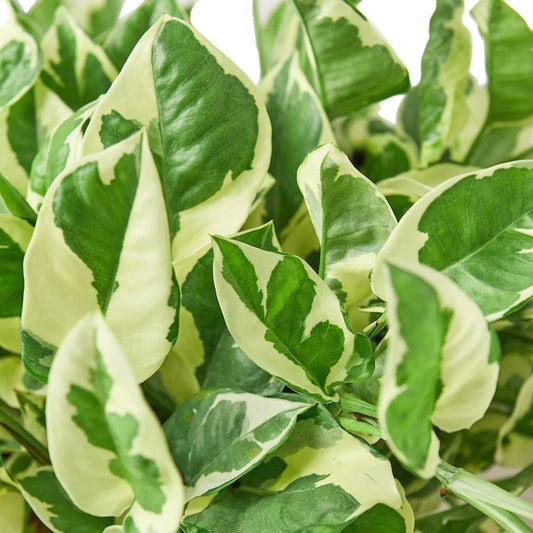Lady Fern Aerial Roots: Everything You Need to Know
Cafe Planta Team
When it comes to houseplants, ferns have always had a spot in the heart of many plant lovers. Their lush, feathery foliage adds a touch of elegance to any space. But there’s one specific kind that’s been gaining attention for a particularly quirky feature: the Lady Fern. More specifically, its aerial roots. So, what are these curious extensions, and why do they matter?
In this article, we’ll explore all you need to know about Lady Fern aerial roots. From what they are and why they develop, to how you can care for a Lady Fern with these roots, we’ve got you covered. So, grab a cup of your favorite beverage, sit back, and let's chat about these fascinating plants!
What Exactly Are Aerial Roots?
First things first, let's get to the basics. Aerial roots are, as the name suggests, roots that grow above the ground or water. Unlike the roots we're used to seeing that dig deep into the soil, aerial roots have their own special function and characteristics.
In Lady Ferns, these roots might look a bit like small, wiry strands popping out of the plant. They’re not just for show, though. Aerial roots can help the plant in several ways, such as absorbing moisture from the air, providing extra support, and sometimes even helping with photosynthesis. While they might look a bit wild, they’re actually quite beneficial!
Interestingly enough, aerial roots can also tell you a lot about your plant's environment. If your Lady Fern is sprouting more of these roots, it might be a hint that it's trying to adapt to its surroundings, perhaps seeking more humidity or stability.
Why Do Lady Ferns Develop Aerial Roots?
So why exactly does a Lady Fern develop these peculiar roots? Well, there are a few reasons, and understanding them can really help you provide the best care for your plant.
- Humidity Levels: Lady Ferns love humidity. If the air around your plant is on the drier side, it may start developing aerial roots to soak up as much moisture as possible.
- Stability and Support: Sometimes, these roots grow to provide extra stability. If your fern is in a spot where it’s getting a bit wobbly, the roots can act like anchors.
- Growth and Exploration: Like some adventurous types, Lady Ferns sometimes grow aerial roots simply to explore their environment. It's a natural part of their growth process.
While these roots are helpful, they can also signal that your fern might need a bit more attention. It might be time to check on your plant's environment to ensure it’s as comfy as possible!
Caring for Lady Ferns with Aerial Roots
Now that you know why your Lady Fern might develop aerial roots, how do you care for it? Well, it’s not all that different from regular fern care, but there are a few things to keep in mind.
Humidity and Watering
As we mentioned, Lady Ferns love humidity. If you notice aerial roots, try misting your plant regularly or placing a humidifier nearby. This can help keep those roots happy and healthy.
When it comes to watering, keep the soil consistently moist, but not soggy. Ferns don’t like being waterlogged, so make sure your pot has good drainage. You might also want to consider using distilled or rainwater, as they can be sensitive to the chemicals in tap water.
Soil and Potting
A good soil mix can make a world of difference for your Lady Fern. Opt for a peat-based mix that retains moisture but drains well. If you’re repotting, choose a slightly larger pot to give those aerial roots some room to breathe.
Consider adding some orchid bark or perlite to the soil mix to improve aeration and mimic the fern's natural environment. This small tweak can encourage healthy root growth and support the aerial roots.
How to Trim or Manage Aerial Roots
While aerial roots are generally beneficial, sometimes they can get a bit unruly. If they’re becoming more of a hassle than a help, there are ways to manage them without harming your plant.
Trimming Tips
- Use clean, sharp scissors or pruners to carefully trim the roots. This prevents any potential damage or disease transfer.
- Trim only a little at a time. You don’t want to shock the plant by removing too much at once.
- Keep an eye on the plant after trimming. If it shows signs of stress, ease up on any further cutting.
Managing aerial roots is about balance. You want your Lady Fern to stay healthy and happy, so regular maintenance and observation are key.
Potential Problems and Solutions
Like any plant, Lady Ferns can face a few hiccups along the way. If you notice something amiss with your fern or its aerial roots, don’t panic! Here are some common issues and how to tackle them.
Brown or Dry Roots
If the aerial roots are turning brown or dry, it’s usually a sign of low humidity. Increase the moisture in the air by misting more often or using a humidity tray. You can also group your ferns with other humidity-loving plants to create a microclimate.
Wilting or Drooping
If your fern seems to be wilting, it might be a watering issue. Check the soil moisture and adjust your watering schedule. Remember, consistency is crucial—don’t let the soil dry out completely.
If these solutions don’t seem to help, consider checking for pests or diseases that might be affecting your plant's health.
Benefits of Aerial Roots for Lady Ferns
Despite their sometimes quirky appearance, aerial roots offer a range of benefits for your Lady Fern. By understanding these benefits, you can appreciate these fascinating features even more.
- Enhanced Moisture Absorption: Aerial roots can capture moisture from the air, supplementing the plant's water intake and helping it thrive in less-than-ideal environments.
- Increased Stability: These roots can anchor the plant, providing extra support and helping it maintain its upright position.
- Improved Nutrient Absorption: In some cases, aerial roots can assist in absorbing nutrients directly from the air or surrounding materials, like moss or bark.
Embracing these benefits can help you create a healthier environment for your Lady Fern, ensuring it grows strong and vibrant.
Incorporating Lady Ferns into Your Interior Design
Aside from their health benefits, Lady Ferns with aerial roots can also add a unique touch to your home decor. Here are some creative ways to incorporate them into your space.
Hanging Displays
Use macrame hangers or decorative pots to showcase your Lady Ferns. Hanging them at varying heights can create a dynamic, layered look that highlights the beauty of the aerial roots.
Terrariums and Glass Containers
Placing your ferns in glass containers or terrariums can give them a modern, stylish edge. The transparency of the glass allows you to appreciate the intricate network of roots while maintaining a sleek aesthetic.
Natural Accents
Pair your Lady Ferns with natural materials like wood, stone, or woven baskets. This combination can create a warm, inviting atmosphere that celebrates the plant's organic beauty.
Propagating Lady Ferns with Aerial Roots
Thinking about propagating your Lady Fern? Aerial roots might give you a head start! Here’s how you can use them to grow new plants.
Division Method
Lady Ferns can be propagated through division, especially when they have a healthy network of aerial roots. Here’s a simple way to do it:
- Gently remove the fern from its pot and shake off excess soil.
- Look for natural divisions or offsets in the plant.
- Use a clean knife or scissors to separate the sections, ensuring each has roots and foliage.
- Replant the divisions in fresh soil and water thoroughly.
After a few weeks, you should see new growth, indicating a successful propagation!
Common Myths About Aerial Roots
There are a few myths floating around about aerial roots, so let’s clear the air and set the record straight.
Myth: Aerial Roots Mean Your Plant is Sick
People sometimes think that aerial roots indicate a problem. In reality, they’re a natural part of your plant’s growth and adaptation process. While they can signal a need for more humidity or stability, they’re not a sign of illness.
Myth: Aerial Roots Are Useless
Far from it! Aerial roots have several functions, from absorbing moisture to providing support. They’re not just decorative—they’re a vital part of your plant’s health and well-being.
Understanding these myths helps you appreciate aerial roots for what they truly are—a fascinating and beneficial feature of your Lady Fern.
Final Thoughts
Lady Fern aerial roots are a captivating feature that not only add to the plant's charm but also highlight its adaptability and resilience. From providing extra moisture absorption to enhancing stability, these roots are an essential aspect of fern care that shouldn’t be overlooked.
Here at Cafe Planta, we love helping plant people with their green friends. Whether you’re looking for new plants, accessories, or just some friendly advice, we’re here for you. Feel free to reach out to us via email or connect with us on Instagram. Let's grow together and make your home a lush sanctuary!



















